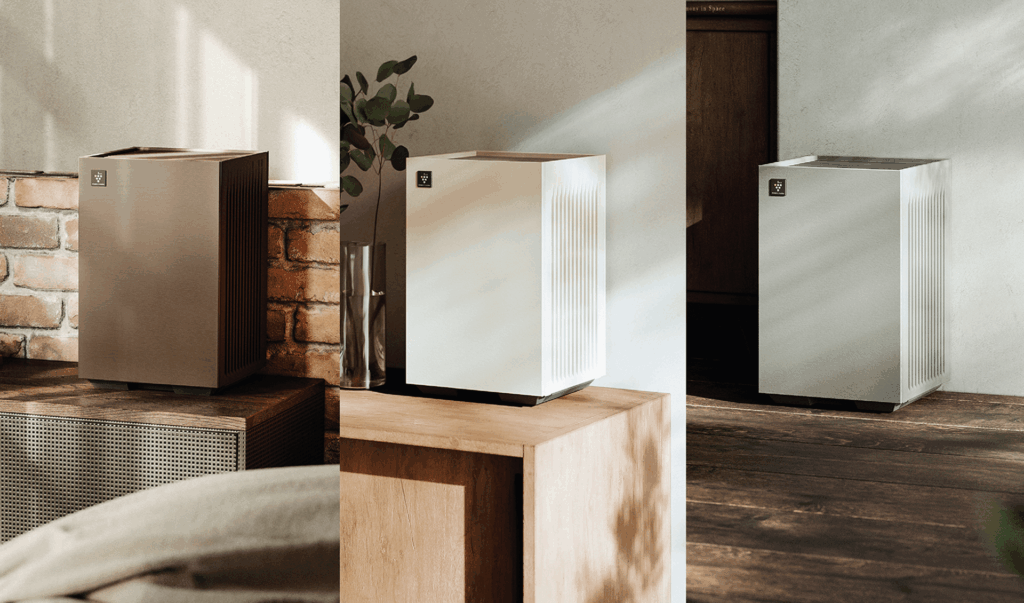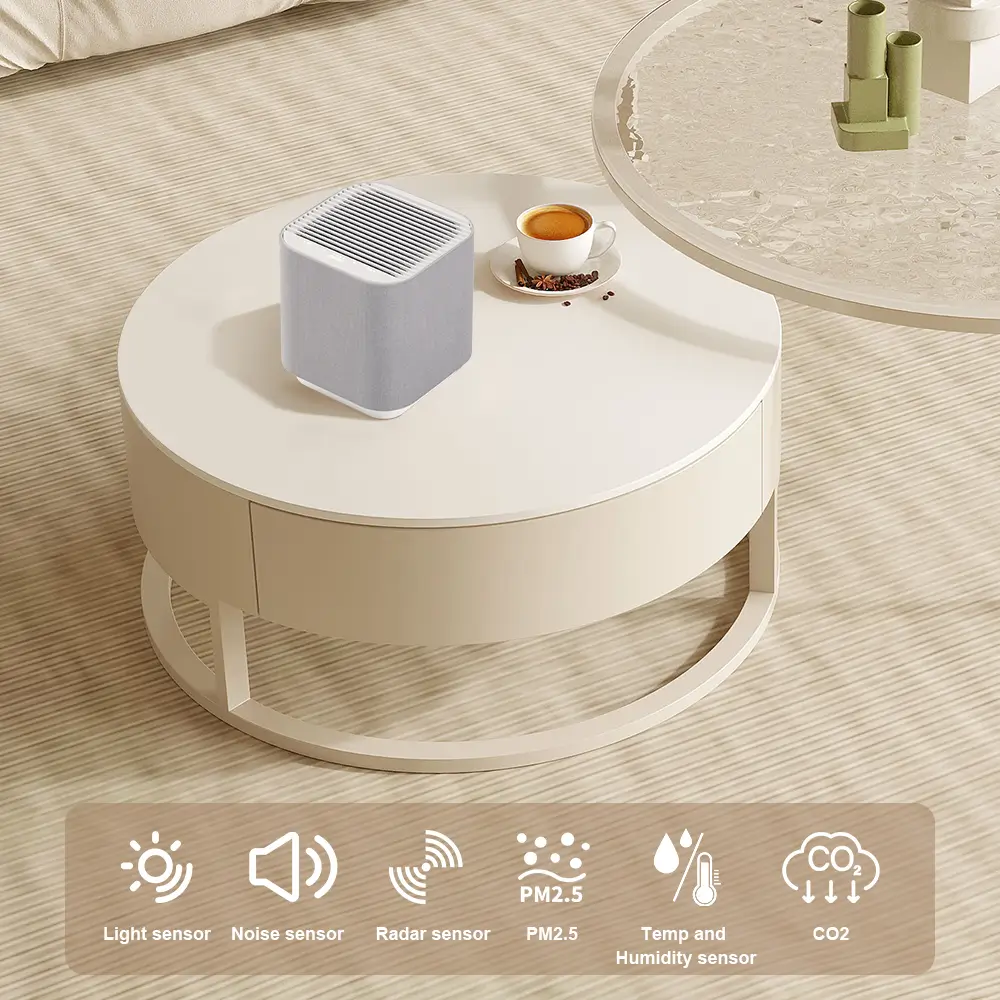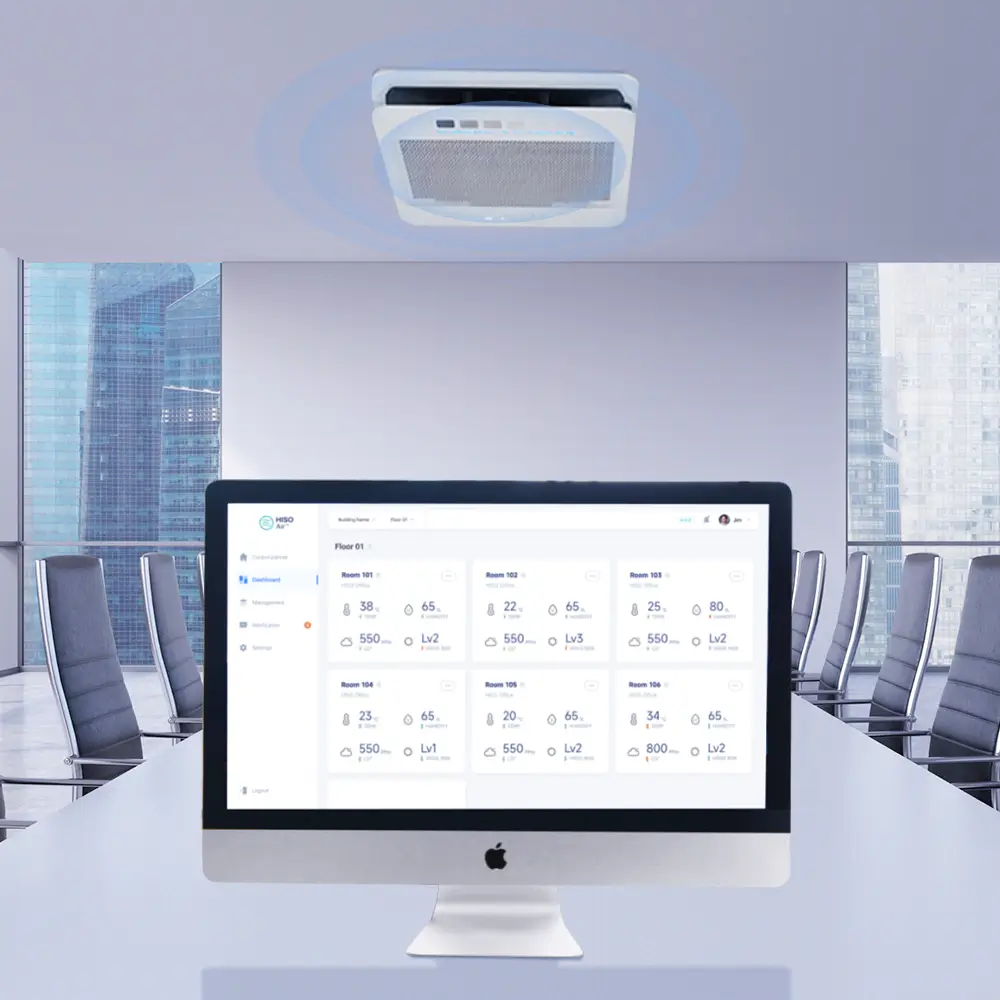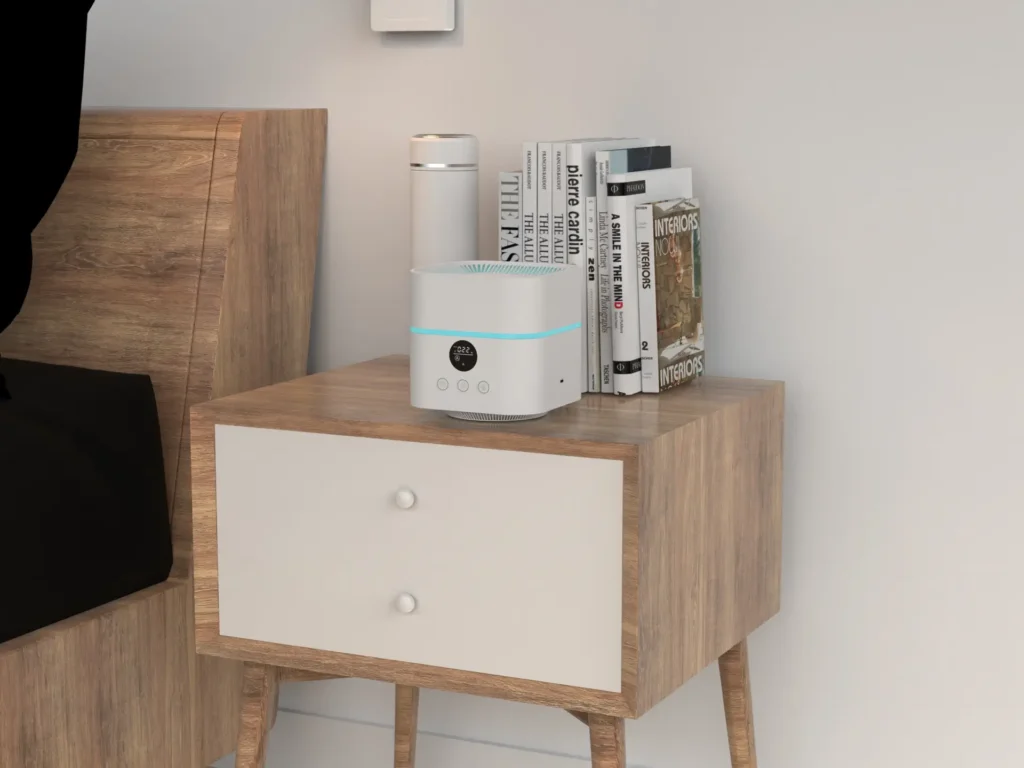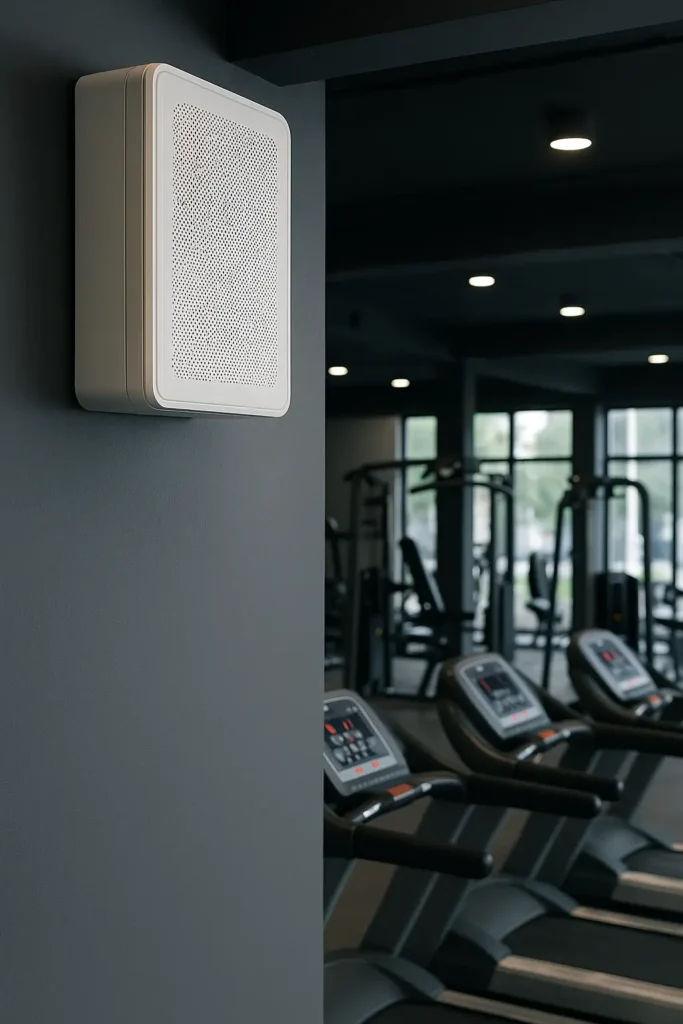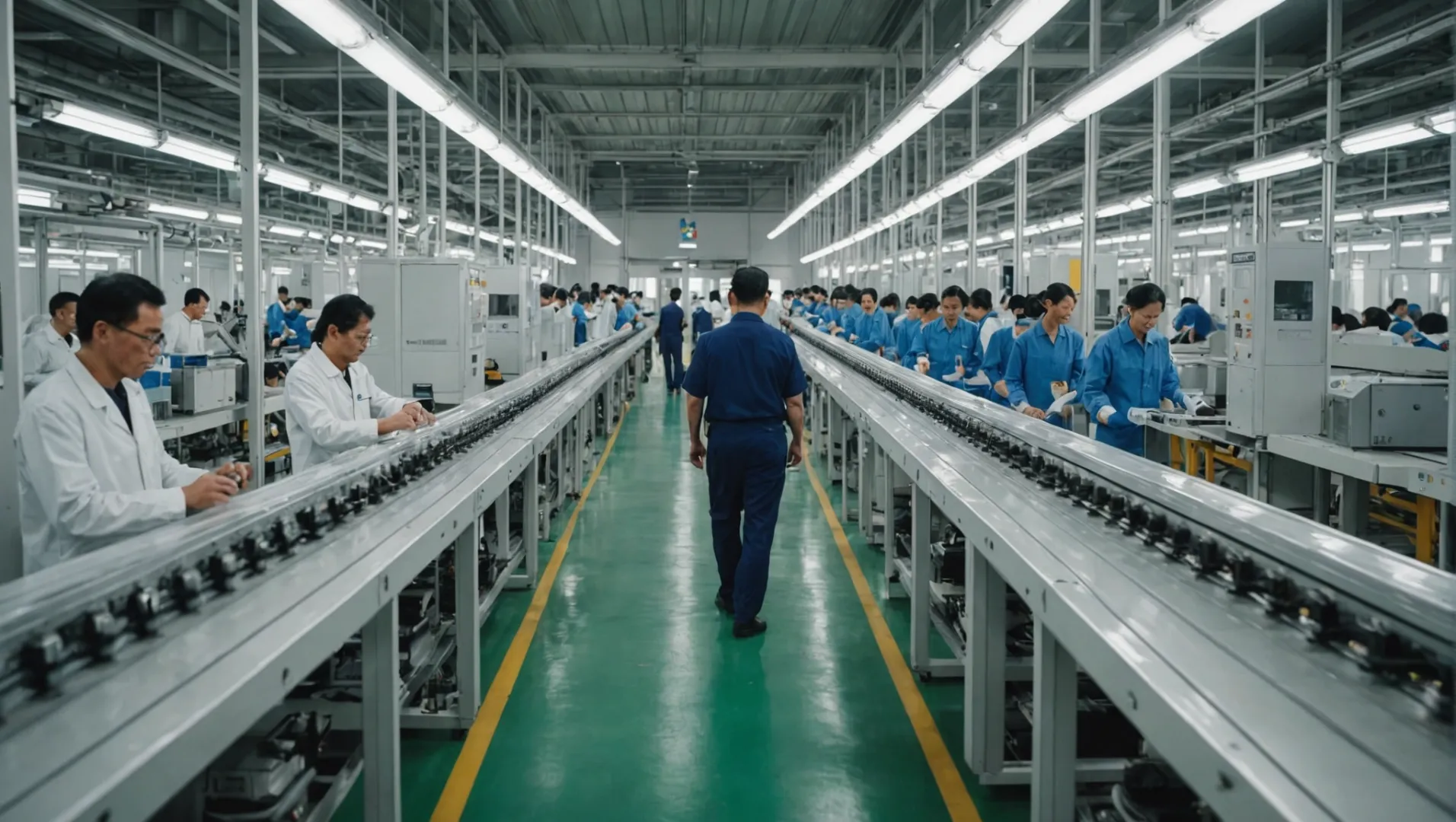
きれいな空気が贅沢品のように感じられる世の中で、空気清浄機の原産国は本当に重要なのだろうか?
中国が現在空気清浄機の生産でリードしているのは、その強固なサプライチェーン、製造の専門知識、コスト効率によるものである。しかし、マレーシアは、ダイソンのような有名ブランドが市場に貢献し、能力を高めており、重要なプレーヤーとして台頭してきている。
このトピックを深く掘り下げると、中国が王座を占める一方で、マレーシアが遠く及ばないことが明らかになった。では、この2カ国がどのように競い合っているのかを探ってみよう!
空気清浄機の生産は、中国がマレーシアをリードしている。真
中国の確立されたインフラとコスト効率の高さが、中国をリードしている。
中国が空気清浄機生産で優位に立つ理由とは?
空気清浄機の生産で中国がリードしているのは、その広大なサプライチェーン、製造能力、コスト効率に起因する。しかし、この優位性には一体何が貢献しているのだろうか?
中国は、その広範なサプライ・チェーン・ネットワーク、歴史的専門知識、競争力のある製造コストにより、空気清浄機の生産を支配している。
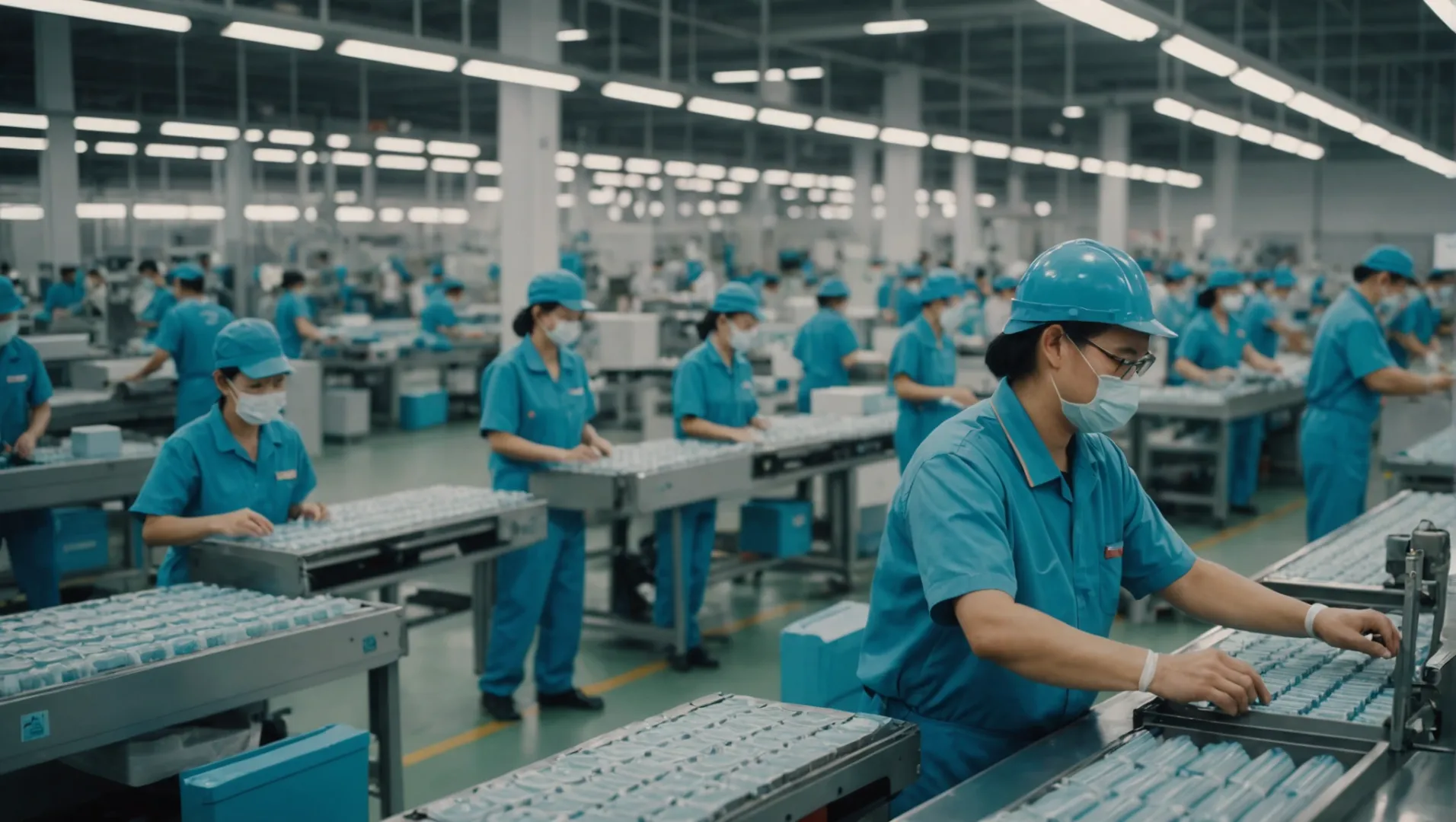
サプライチェーンの力
中国は長年にわたり、サプライヤーとメーカーの広範なネットワークを丹念に構築してきた。 サプライチェーンシステム1 空気清浄機の生産を支えている。この強固なインフラにより、プラスチック部品から電子モジュールまで、必要なすべての部品がすぐに入手でき、リードタイムとコストを削減できる。
製造の専門知識
電子機器や消費財の製造において数十年の経験を持つ中国は、高品質の空気清浄機を製造する上で比類のない専門知識を提供している。この専門知識は、技術的なノウハウだけでなく、市場の需要に素早く対応する革新的な能力でもある。
コスト効率
中国を支配的なプレーヤーにしている重要な要因のひとつは、そのコスト効率である。中国での製造は、低い人件費と規模の経済により、コスト効率に優れている。マレーシアなどへの生産移転の議論でも言及されたように、潜在的な関税引き上げがあったとしても、中国のコスト優位性はこうした追加費用を上回ることが多い。
革新と技術の進歩
中国は大量生産だけでなく、技術革新の最前線にもいる。多くの中国企業が研究開発に多額の投資を行い、空気清浄技術を向上させ、世界中の消費者にとってより効果的で手頃な価格の製品を生み出している。この継続的なイノベーション・サイクルにより、中国は量と質の両面でリーダーであり続けている。
世界市場への影響力
空気清浄機の生産における中国の圧倒的な地位は、世界の価格設定や技術動向にも大きな影響力を与えている。最大手メーカーである中国は、他国が太刀打ちできないような競争力のある価格を設定できる一方、業界の将来を形作る技術の進歩も推進できる。
結論として、マレーシアが手ごわい競争相手として台頭している一方で、中国はサプライチェーンの効率性、製造の専門知識、コスト優位性、革新的精神を兼ね備えており、空気清浄機市場のリーダーとしての地位を固め続けている。
中国のサプライチェーンが空気清浄機の生産コストを削減。真
中国の効率的なサプライチェーンは、部品の供給力を確保し、コストを下げる。
マレーシアは空気清浄機の技術革新で中国を凌駕している。偽
中国が空気清浄機の技術革新でリードしているのは、多額の研究開発投資によるものである。
空気清浄機市場におけるマレーシアの台頭は?
空気清浄機市場が発展するにつれ、マレーシアは中国のような既成大手と並ぶ注目すべき競争相手として位置づけられている。
マレーシアは、中国に比べて製造コストが高いなどの課題はあるものの、製造能力を強化し、グローバルブランドを誘致することで、空気清浄機市場で台頭しつつある。
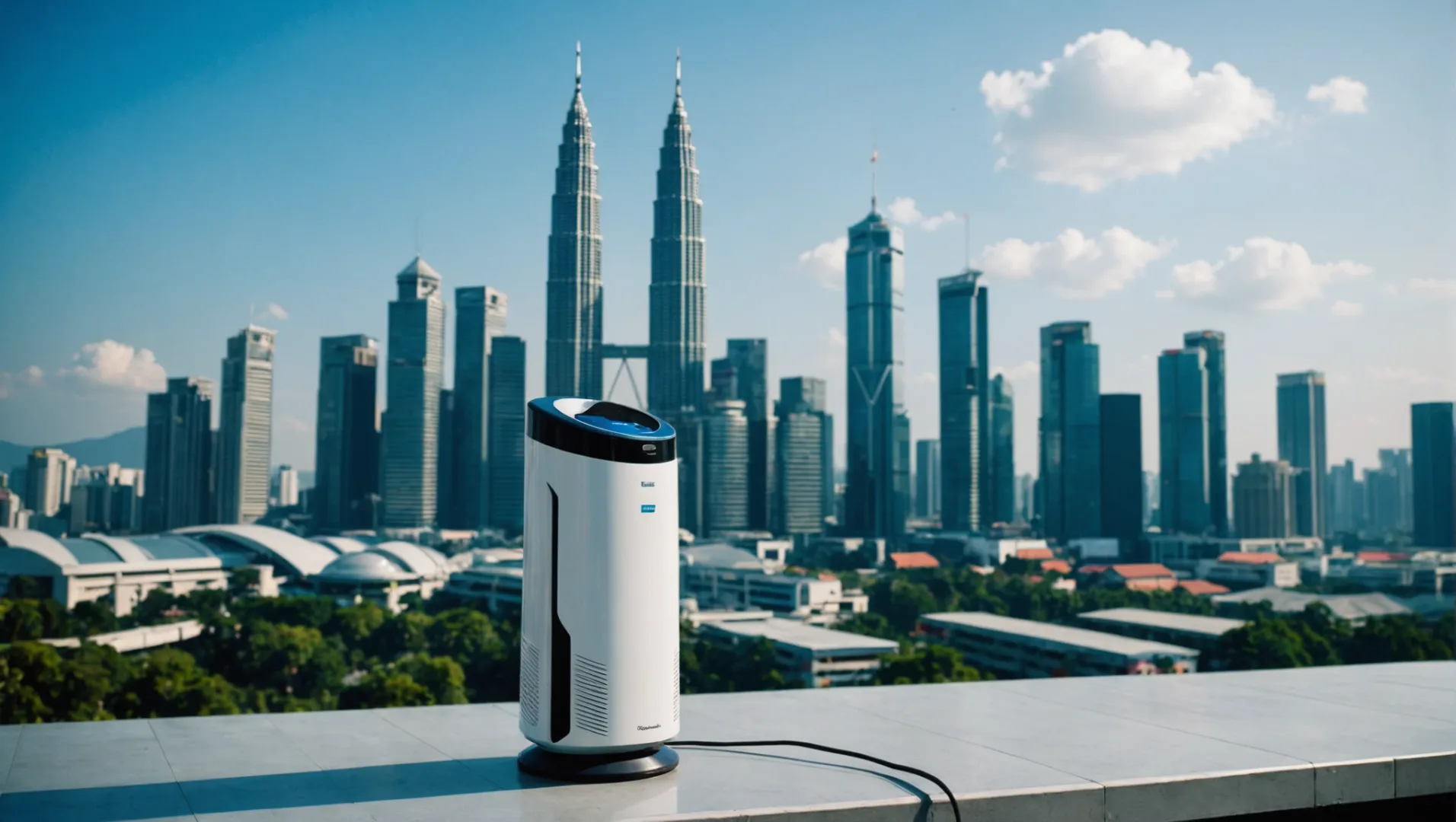
市場におけるマレーシアの戦略的地位
空気清浄機市場におけるマレーシアの台頭は、その戦略的立地と産業基盤の成長に起因している。この東南アジアの国は、生産拠点の多様化を目指すメーカーにとって好都合な環境を提供している。ダイソンのようなグローバル・ブランドはすでにマレーシアに進出しており、この国の急成長する産業能力の恩恵を受けている。
世界貿易政策の影響
世界的な貿易政策の変化、特に関税は、マレーシアへの生産シフトにも影響を及ぼしている。潜在的な関税によって中国製商品のコストが上昇する可能性があるため、多くの企業が代替生産地を模索している。マレーシアは比較的安定した政治環境と改善しつつある製造インフラにより、実行可能な選択肢を提供している。
課題と機会
マレーシアには多くのチャンスがある一方で、課題もある。大きなハードルのひとつは、中国に比べて生産コストが高いことだ。この増加は、労働効率や中国から主要部品を輸入する必要性などの要因によるもので、約10~15%と推定される。しかし、潜在的な関税上のメリットや、多様なサプライチェーンを持つことによる戦略的優位性は、これらのコストを相殺することができる。
地域ブランドとイノベーションの役割
マレーシアの地元ブランドは、技術革新と競争力のある価格設定によって、空気清浄機業界で頭角を現し始めている。こうしたブランドの存在は、世界市場におけるマレーシアの地位を高めるだけでなく、地元の経済成長も刺激している。
主要コンポーネントの比較
| ファクター | 中国 | マレーシア |
|---|---|---|
| 労働効率 | 高い | 中程度 |
| 生産コスト | より低い | 10-15%の方が高い |
| コンポーネントのインポート依存性 | 低い | 高い |
こうした力学を理解することで、企業は空気清浄機をどこで製造するかについて、十分な情報に基づいた決定を下すことができる。マレーシアへのシフトは、世界中の消費者に影響を与えながら、この重要な産業の展望を再構築する可能性がある。より深い洞察のために 世界貿易政策の影響2 そして マレーシアの製造能力3そして、さらなる読み物と分析を探求する。
マレーシアは中国よりも生産コストが低い。偽
マレーシアの生産コストは中国に比べ10-15%高い。
ダイソンはマレーシアに進出する。真
ダイソンはマレーシアに進出しているグローバル・ブランドのひとつである。
生産シフトに影響を与える主な要因とは?
空気清浄機業界における生産シフトは、複数の複雑な要因によって推進され、世界の製造業を再構築している。
生産シフトに影響を与える主な要因には、コスト効率、サプライチェーンの堅牢性、地政学的変化、技術の進歩などがある。これらの要素は、企業がどこで製品を製造するかを決定し、空気清浄機業界に大きな影響を与える。
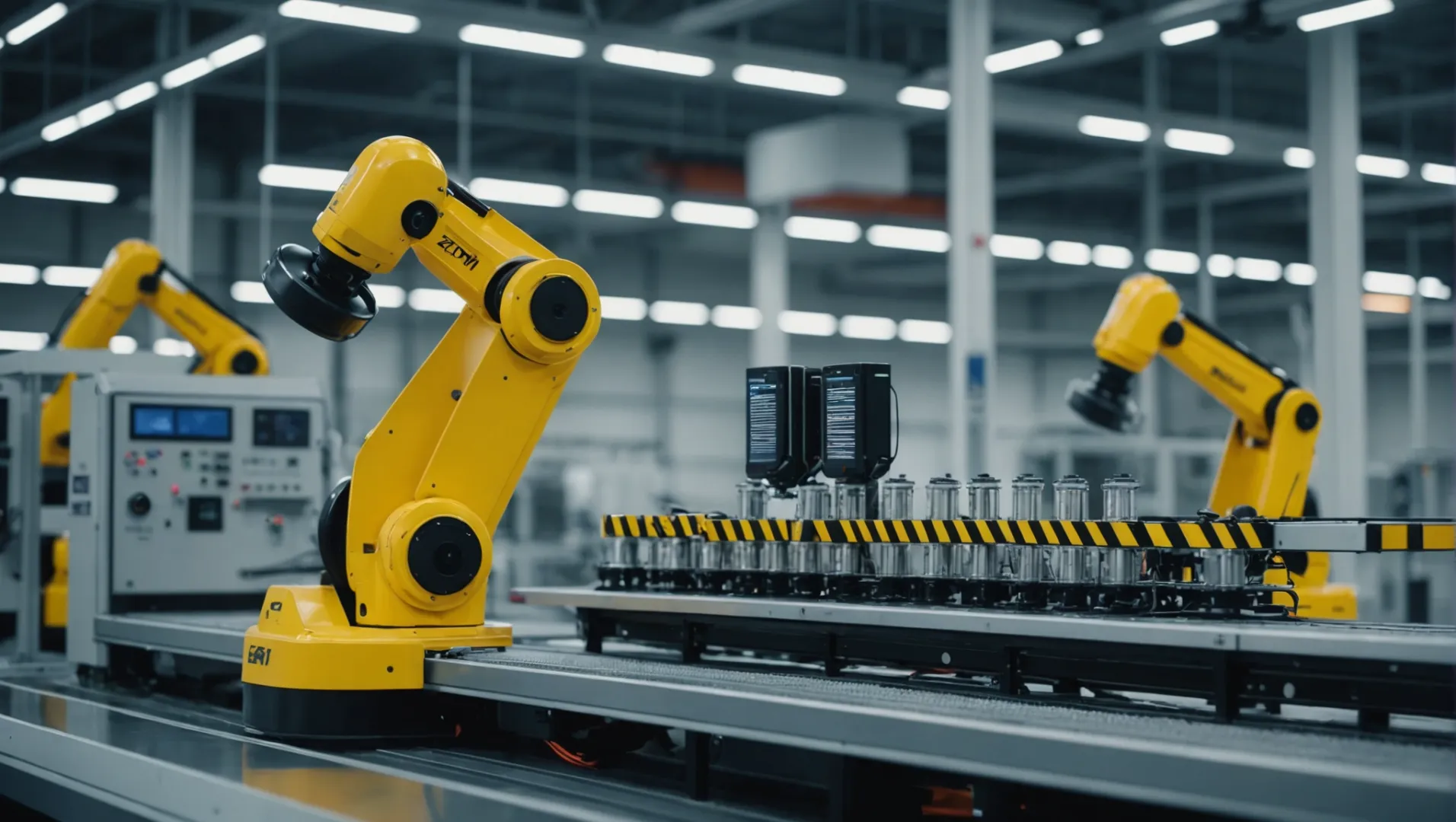
コスト効率
生産シフトに影響を与える主な要因のひとつは、コスト効率である。例えば、空気清浄機の生産で現在中国がリードしているのは、労働効率と統合されたサプライチェーンによって低コストを維持できていることが主な要因である。しかし、関税やその他の経済的要因が進化するにつれ、企業はマレーシアのような、初期コストは高くても長期的なコスト削減が可能な国に移転することが有益だと考えるようになるかもしれない。こうした力学を理解することは、オペレーション・コストの最適化を目指す製造業者にとって極めて重要である。
サプライチェーンの堅牢性
製造業における中国の歴史的な優位性は、その強固なサプライチェーン・ネットワークに由来する。このインフラは、材料や部品の安定した流れを確保することで、空気清浄機の製造を含む様々な産業を支えている。とはいえ、空気清浄機の主要部品の一部は、ダイソンのようなマレーシアのメーカーでさえも中国から輸入している。グローバル・サプライ・チェーンが混乱に直面するにつれ、多様化の必要性が明らかになり、マレーシアのような製造能力が伸びている国が魅力的な選択肢となっている。
地政学的変化
地政学的情勢は製造業の意思決定に大きな影響を与える。例えば、政権が変われば、米国の通商政策も大きく変わる。中国製品に対する関税が引き上げられる可能性があることから、一部の製造業者は他のアジア諸国への移転を検討している。マレーシアは、その戦略的立地と新興産業基盤から、実行可能な選択肢として際立っている。
技術の進歩
技術の進歩も生産シフトに一役買っている。マレーシアの製造能力は急速に伸びており、先端技術の統合はその魅力をさらに高める可能性がある。時代を先取りしようとする企業は、新技術を採用するメリットと、それに伴うコストや潜在的なリスクを天秤にかける必要がある。
これらの要因は相互に関連し合い、複雑であるため、企業は常に情報を入手し、適応していく必要がある。生産シフトの決定は1つの要素だけに基づいているのではなく、業界の将来の展望を形作ることができる影響の組み合わせに基づいている。これらの要因がどのように絡み合っているのか、さらに詳しく知りたい方は、以下をご覧ください。 製造業への地政学的影響4 または 製造技術の進歩5.
中国が空気清浄機の生産をリードしているのは、コスト効率の高さによるものだ。真
中国は労働効率とサプライチェーンの統合により、より低いコストを維持している。
マレーシアの製造業は技術の進歩に欠けている。偽
マレーシアの製造能力は高度な技術によって成長している。
中国とマレーシアの生産コストの比較は?
中国とマレーシアの生産コストを理解することは、空気清浄機業界における戦略的なビジネス意思決定の指針となる。
中国の生産コストは、確立されたサプライチェーンと製造効率により、一般的に低い。マレーシアは若干コスト高だが、関税の引き下げと現地生産能力の向上により、コスト削減の可能性がある。
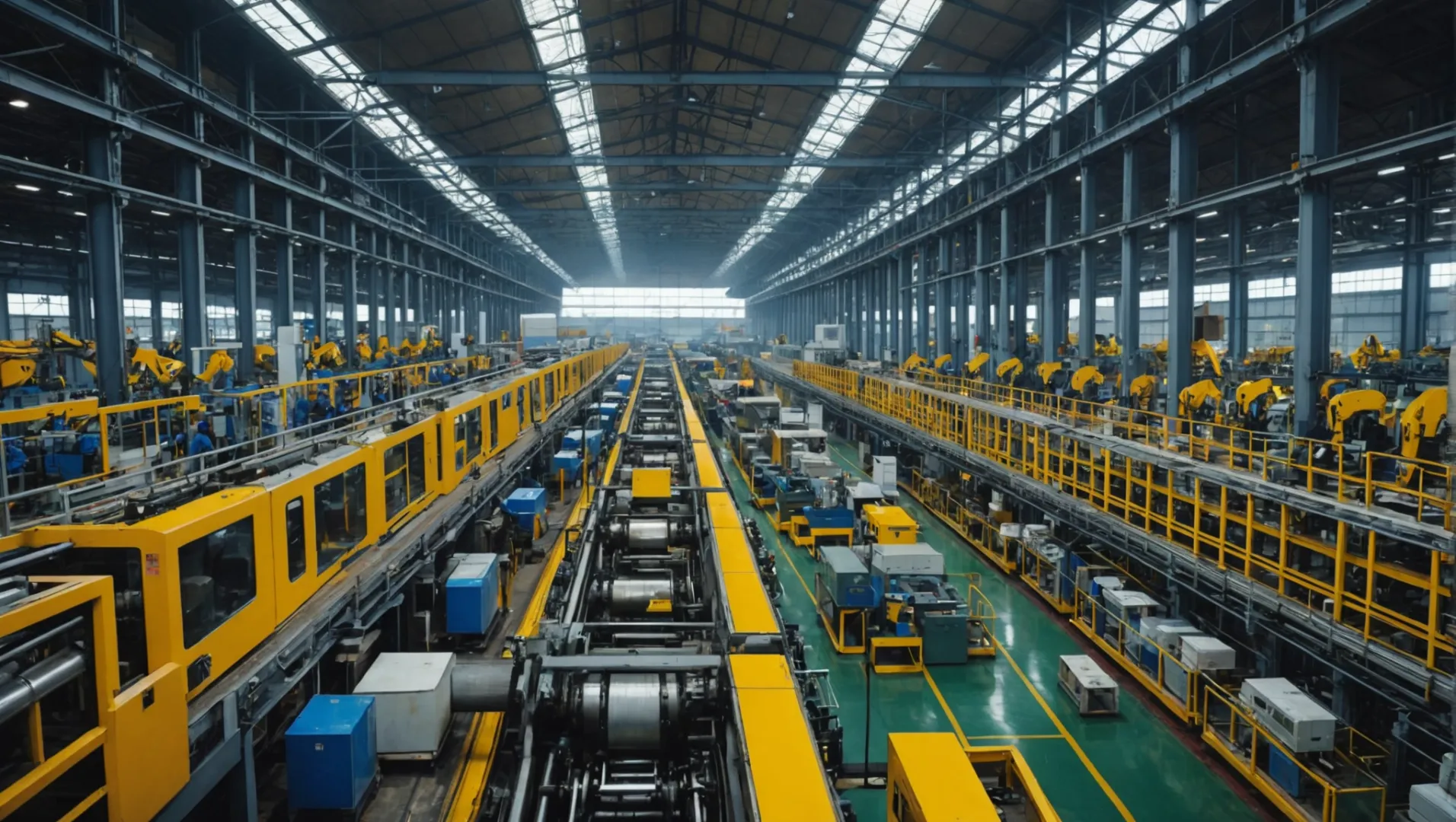
人件費の比較
生産コストを左右する最も大きな要因のひとつが人件費である。中国では、経済成長と生活水準の向上により、人件費は年々着実に上昇している。しかし、それでもなお、中国には生産効率を高める熟練した労働力が多数存在し、その恩恵を受けている。
対照的に、マレーシアは一般的に低い人件費で競争力を提供している。同国は製造業の発展を続けているため、企業はスキルレベルに妥協することなく、より手頃な労働力を活用することができる。
サプライチェーン効率の評価
中国の確立されたサプライチェーンは、メーカーに必要不可欠な部品、材料、専門知識への迅速なアクセスを提供する。これにより、生産コストが削減されるだけでなく、納期も短縮される。
マレーシアはサプライチェーンを発展させつつも、主要部品の輸入を中国に依存している。この依存は、輸入手数料や物流費のために生産コストを押し上げる可能性がある。しかし、マレーシアが製造能力を高めるにつれて、こうしたコストは減少していくと予想される。
関税と貿易政策の影響
世界的な貿易政策の変化に伴い、関税は生産コストの最適化を目指す企業にとって極めて重要な検討事項となっている。例えば、中国製品に対する米国の新たな関税が大幅に引き上げられた場合、生産拠点をマレーシアに移すことで、こうした費用を軽減できる可能性がある。
中国製製品に対する60%の関税引き上げの可能性は、空気清浄機メーカーが、米国などの主要市場への輸出関税が引き下げられるマレーシアに移転する動機付けになるかもしれない。
製造コスト要因の概要表
| ファクター | 中国 | マレーシア |
|---|---|---|
| 人件費 | ライジング | より低い |
| サプライチェーンの効率化 | 高効率 | 開発中 |
| コンポーネントのインポート依存性 | 低い | 高い |
| 関税の影響 | 米国と高い可能性 | 関税引き下げの見通し |
マレーシアの成長するインフラと有利な貿易政策は、コストと市場へのアクセスのバランスを求める製造業者にとって魅力的な選択肢となる。しかし、企業はこれらの利点を、中国に見られる確立された効率性と比較検討する必要がある。
貿易政策が世界の製造業にどのような影響を与えるかについて、さらに詳しくお知りになりたい方は、以下をご覧ください。 世界貿易への影響6.この資料は、国際的な規制がどのように生産戦略を形成しうるかについて、より広範な文脈を提供するものである。
中国はマレーシアよりも生産コストが低い。真
中国は、確立されたサプライチェーンと製造効率の恩恵を受けている。
マレーシアの人件費は中国より高い。偽
マレーシアは中国に比べて人件費が安く、競争力を高めている。
結論
現在は中国が優勢だが、マレーシアの急速な進歩は空気清浄機生産の将来を塗り替える可能性がある。
-
中国のサプライチェーンの優位性が空気清浄機生産にどのような影響を与えているかをご覧ください:中国の空気清浄機生産における優位性は、そのコスト効率と強固なサプライチェーンインフラから生まれている。中国が空気清浄機生産で優位に立つ理由は、そのコスト効率と強固なサプライチェーン・インフラにある。 ↩
-
世界の貿易政策が製造業の意思決定にどのような影響を与えるのか、グローバルな視点でご覧ください:貿易政策、新たな政府協定、規制が新たな戦略の必要性を生み出す中、製造業におけるグローバリゼーションは転換期を迎えている。 ↩
-
空気清浄機分野で成長するマレーシアの製造能力について..:マレーシアの空気清浄機市場の2023年の市場規模は7,956万ドルで、予測期間のCAGRは10.32%と堅調な成長が見込まれる。 ↩
-
地政学的力学が世界の製造拠点に与える影響..:地政学的な緊張は、電子製品や再生可能エネルギー製品の製造業者にとって、重要な鉱物へのアクセスを脅かす可能性があります。 ↩
-
現代の製造プロセスを形成するイノベーションをご覧ください:1.デジタル化とインダストリー4.0デジタル化は製造業に多大な影響を及ぼし、プロセスの最適化、製造工程の改善、生産性の向上を可能にした。 ↩
-
貿易政策が製造ダイナミクスに与える影響について洞察する..:貿易規制が利益率に与える潜在的な影響により、多くの製造業者は、輸入先からの調達によって投入コストを削減する選択肢を模索している。 ↩


